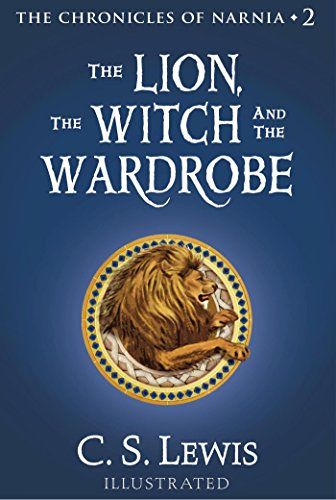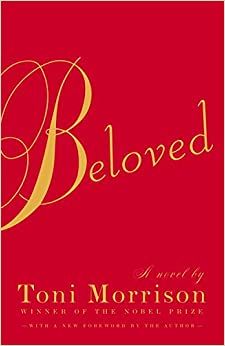Persistent Religious Confusion
I did not initially realize that Aslan was a lion stand-in for Jesus in The Chronicles of Narnia: The Lion, The Witch, and the Wardrobe. It’s very obvious in retrospect, but I grew up in a Jewish community and went to Hebrew school on the weekends, so making connections between Christian Bible stories and fantasy literature wasn’t a natural thought pattern for me.
When I read The Last Battle and Aslan changed into a man, I had to go to my father for an explanation. We were an interfaith household but we mainly celebrated Jewish holidays and went to Hebrew school; he is Jewish, had also grown up in an interfaith household, and had gone to a parochial school because it was a good local school that would take all students of all religions. The Chronicles of Narnia remain a very formative, important book series in my life, but whenever I go back to them, confusion about how Narnia represents the promised land persists.
This general confusion persisted into my school’s English classes as well. I had the basics down because of Hebrew school, and we had to read Genesis in English class, but the larger Christian themes needed to explained to me more rigorously. What was predestination, and why did I need to know the difference between Calvinists and Lutherans? Additionally, is there Christian significance to the talking horse in The Horse and His Boy?
The Jewish tradition has midrashim (stories inspired by the Torah) and Talmudic texts (in which rabbis argue about the interpretation of the Torah and how to integrate its teachings into daily life), while the Christian Bible appeared to me as a set of confusing rules and names to be memorized in order to get questions right on the Renaissance Art test.
Christianity and the Literary Canon
My experience is exceedingly common among the non-Christian. Although we have a nominal separation of church and state in the United States, the decision-makers in the early colonies were all Christian men and imported that dogma into the country’s laws and institutions. The (more recent) inclusion of “one nation, under G-d” in the Pledge of Allegiance is an easy place to see that.
This point is not meant to argue that all Christianity should be stripped from the literary canon. However, understanding religion (especially Christianity) as a sociocultural dimension of literature means discussing it more rigorously to understand how it shapes the themes and direction of novels. When we treat Christianity as a given and only explain religions that are “different” (like Judaism, Hinduism, Islam, and a whole host of world religions), we fail to understand deeper dimensions of literature and how religion shapes characters’ responses to the events of novels.
For example, I only found out about Toni Morrison’s Catholicism in my 20s, not when I was first introduced to her work in high school. Her books are obviously not Catholic morality tales, but her religious identity reflects an important time in American history. As Nadja Nittle writes in America Magazine: “Morrison converted to Catholicism as a child in the 1940s — a time when Black churchgoing families still shared African folklore with their children, swapped ghost stories and held on to superstitions. This mash-up of mainstream Christianity and African American spiritual traditions shaped Morrison in her personal and professional life alike.” Her interpretation of her faith and how it affects her characters provides a new, exciting lens through which to read her work that I previously did not have access to.
So many novels in the American literary canon respond to (as opposed to lay out and define) the dominance of Christianity and strict moral codes. Since I didn’t receive much Christian teaching and socialization as a young person, it was easy to miss a character’s motivation when I didn’t know the specific culturally dominant Christian moral they were responding to.
Embracing All Religions
As important that it is that Toni Morrison’s religion and spirituality shaped her worldview, it is equally important to me that writers like Judy Blume, Louis Sachar, and Fran Lebowitz are included in discussions about the sociocultural shape of their religion in their work, which is Judaism. In an article celebrating the work of Mahmoud Darwish, writer David J. Wasserstein identifies him as being a part of “tradition of the political poet in Islam, the man of action whose action is poetry.” Engaging with the history of how Muslim writers present and process their religion is also extremely rewarding.
An understanding of any religion can deepen and enrich your reading experience, because you’ll get a diverse perspective on how people around the world have approached questions of morality, community, and faith. The way characters in literature grapple with Big Questions can often have influences in the characters’ religious upbringing, even if it ends up that they reject that upbringing. Since I personally find that my Jewish upbringing influences the way I approach larger questions in my life, I like to read about characters who reconcile with their own faith and spirituality.
Without a robust education in literature inspired by other world religions, we might end up reaffirming the centrality and dominance of Christianity in the literary canon. Aside from assessing the need for a literary canon, there will continue to be English literature classes that make choices about how to integrate religion as a sociocultural force instead of just the water we’re swimming in.
Diving into religions different than your own is an important way to diversify your reading list. There are also plenty of books to dive into about young people grappling with religion, or books to widen your knowledge of Buddhism, Judaism, and even Christianity.


